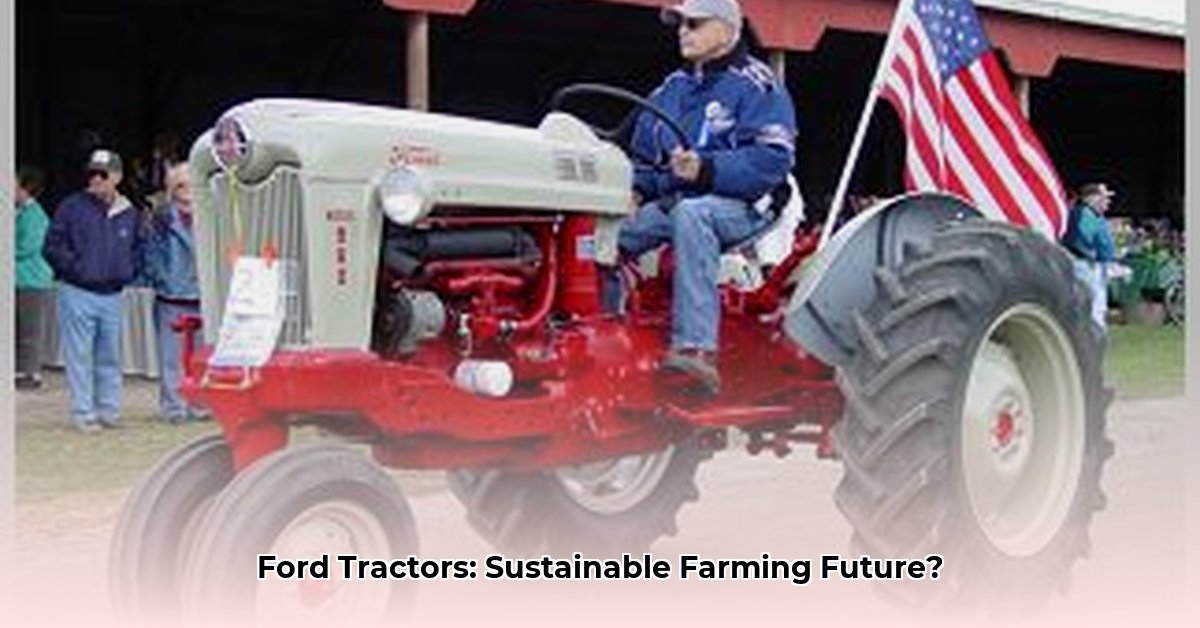
Imagine 1939: A Kansas farmer, weathered and worn from years of backbreaking labor, gazes at the gleaming Ford 9N tractor. This wasn't just another machine; it was a revolution. The 9N's relatively low cost and ease of use democratized modern farming technology, transforming countless farms and forever altering the agricultural landscape. But does this iconic legacy extend to sustainable farming practices? This article explores the evolution of Ford tractors, examining their impact on agricultural efficiency and the environment, and considering their legacy in the context of modern sustainable agriculture. For a visual guide to Ford tractor models, check out this helpful resource.
The Ford Tractor Family: From Innovation to Uncertainty
The decades following the 9N saw a relentless march of technological advancements. Larger engines, increased horsepower, and innovative features constantly improved productivity. Websites like TractorData and Tractor-Specs offer detailed specifications – engine sizes, horsepower, and more – but a critical data gap exists: comprehensive information on fuel efficiency and emissions remains elusive. This lack of concrete data hampers a thorough assessment of the environmental impact of these iconic machines. How much fuel did these tractors consume? What were their emissions levels? These vital questions remain largely unanswered.
Did you know that the Ford 8N, released in 1947, was revolutionary in its own right? Its hydraulic lift greatly improved efficiency, saving countless hours for farmers compared to earlier models!
A Shift in Gears: Ford's Exit and the Sustainability Question
Ford's 1990 withdrawal from the farm equipment market represents a crucial turning point. The subsequent ownership transitions – first to New Holland, then Fiat – marked a shift in focus. Did these new owners prioritize sustainability? The limited accessible data makes it difficult to definitively answer. Finding concrete information on sustainability practices during these transitions is a challenge that requires further research.
How did the shift in ownership affect the sustainability initiatives within the tractor manufacturing process? This question remains crucial to assessing the complete historical context.
Modern Sustainable Farming: A New Standard
Contemporary agriculture demands a new approach. No-till farming, a method that avoids plowing the land, is gaining popularity due to its positive impact on soil health, reduced erosion, and decreased environmental footprint. This raises a key question: How well do modern tractors align with these sustainable practices? Many manufacturers are investing in electric or hybrid tractors and smart technologies to optimize resource use. These advancements contrast with the limited sustainability information available for earlier models, including those produced by Ford.
Unanswered Questions: The Need for Further Research
A complete understanding of the environmental influence of Ford tractors necessitates addressing several key information gaps:
- Full Lifecycle Analysis: Understanding the complete environmental impact of each Ford model requires a comprehensive assessment from material sourcing to final disposal. This necessitates extensive research into historical manufacturing and disposal methods.
- Fuel Efficiency and Emissions Data: Precise, real-world data on fuel consumption and emissions from various Ford tractor models is essential for fair comparisons with contemporary tractors. This requires painstaking archival research.
- Post-Ford Ownership: Examining the design and manufacturing shifts under New Holland and Fiat's ownership is crucial to a complete picture of sustainability initiatives within the tractor design and construction.
Actionable Steps Towards a Greener Future
Building a more sustainable agricultural future requires a collaborative effort.
1. Farmers: Adopt fuel-efficient practices, explore precision agriculture techniques, and consider investing in greener tractor models. This proactive approach can significantly reduce the environmental impact of individual farms.
2. Manufacturers: Prioritize research and development of environmentally friendly technologies, conduct comprehensive lifecycle assessments (LCAs), and be transparent about their products' environmental impacts. This builds trust and drives the entire sector towards sustainability.
3. Researchers and Historians: Fill the historical data gaps by conducting comprehensive LCAs of historical tractor models and making this information publicly accessible. This crucial research is essential to understand the past and inform the future.
4. Policymakers: Implement incentives for sustainable equipment, enforce stricter emissions standards, and fund research on sustainable farming practices. Strategic policy can drive innovation and adoption of environmentally-friendly technologies within the sector.
The legacy of Ford tractors is more than just a story of agricultural advancement. It's a reminder of the ongoing need to adapt farming practices to balance efficiency with environmental responsibility. The future of sustainable agriculture hinges on addressing the unanswered questions and innovating to meet the demands of both a growing population and a healthy planet. The work continues, and the story evolves.